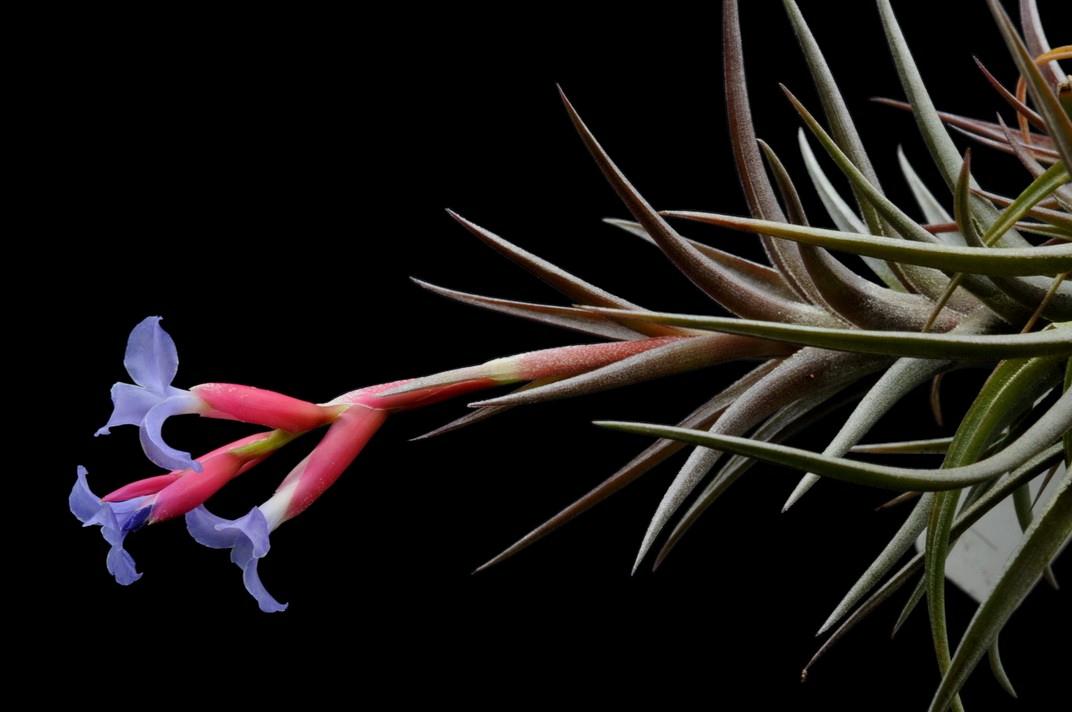
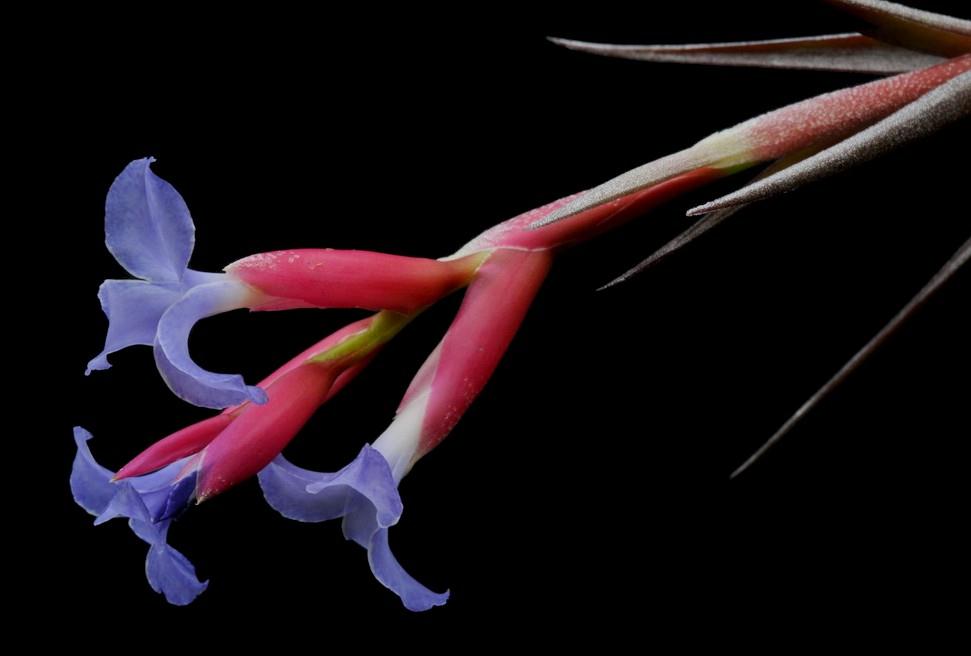
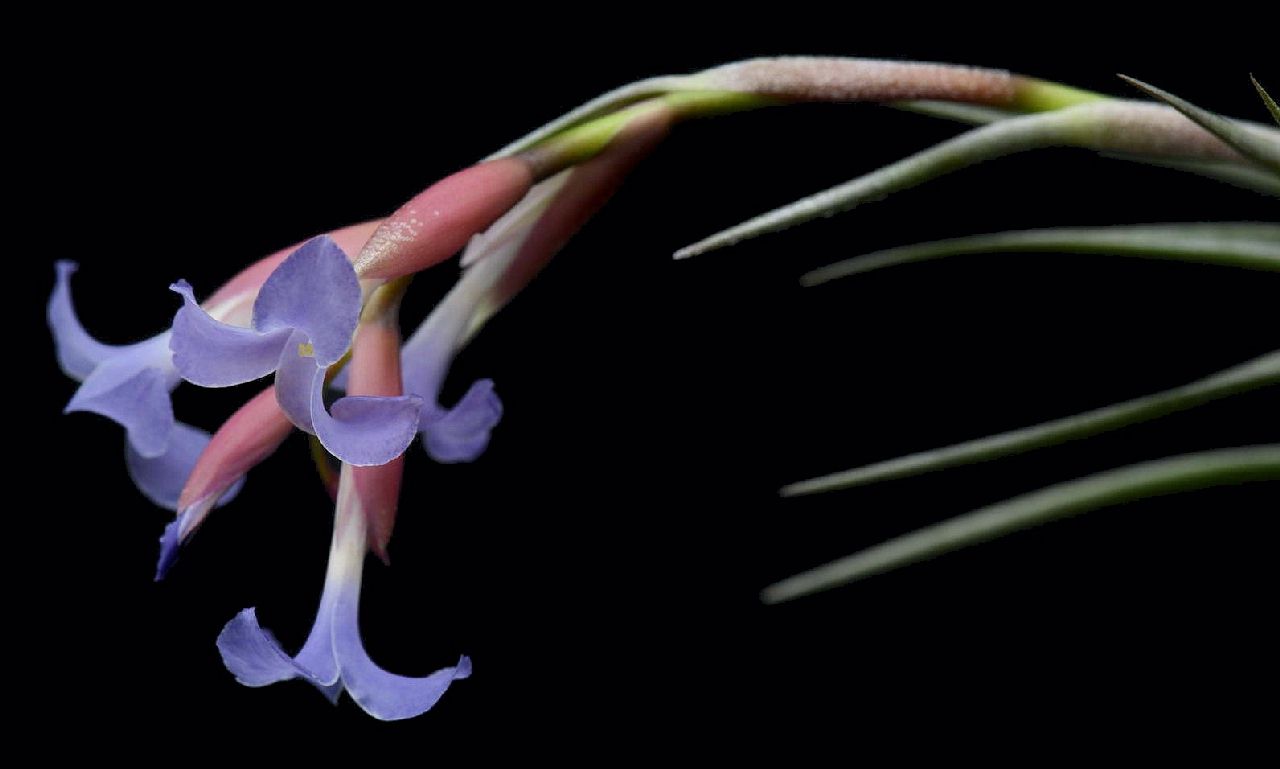
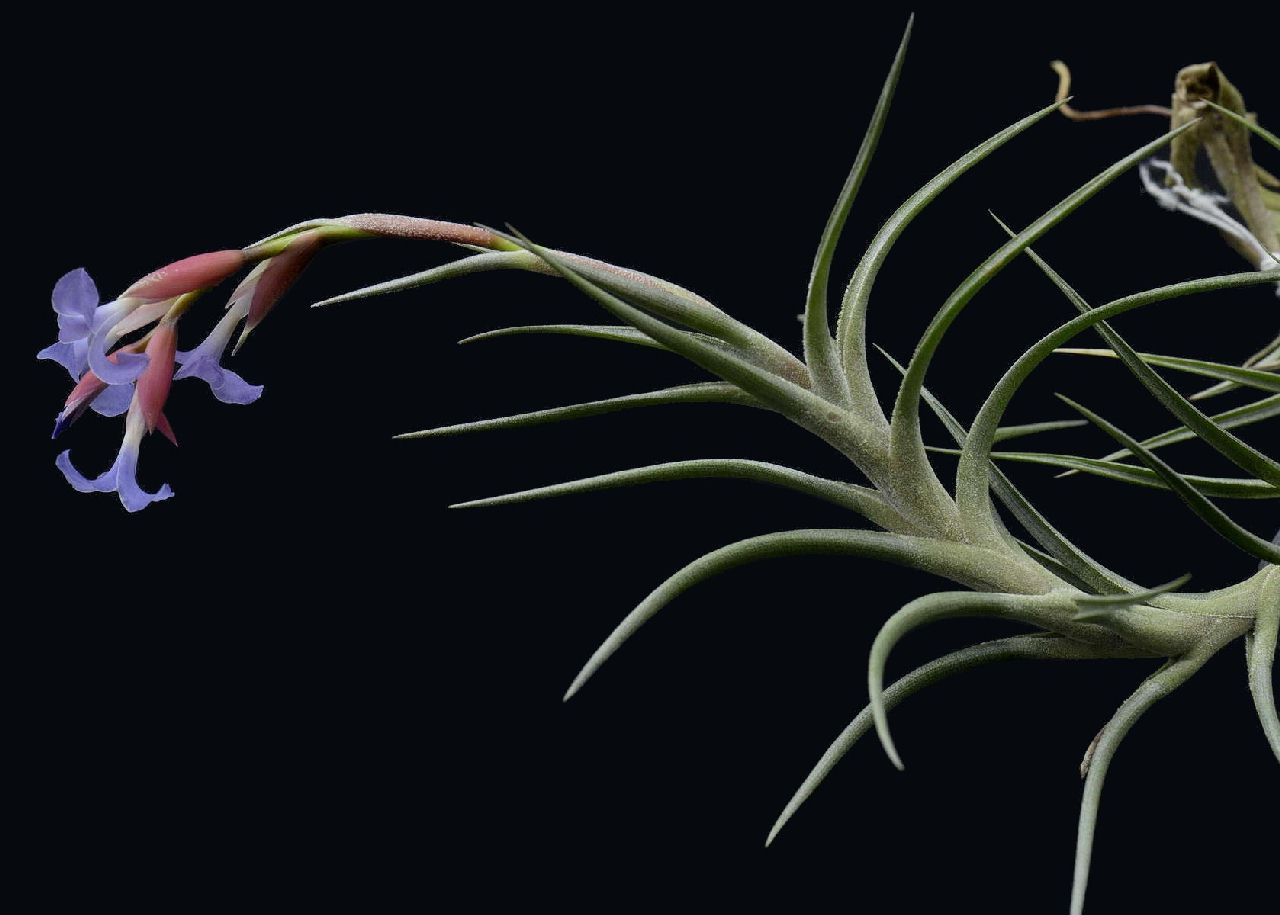
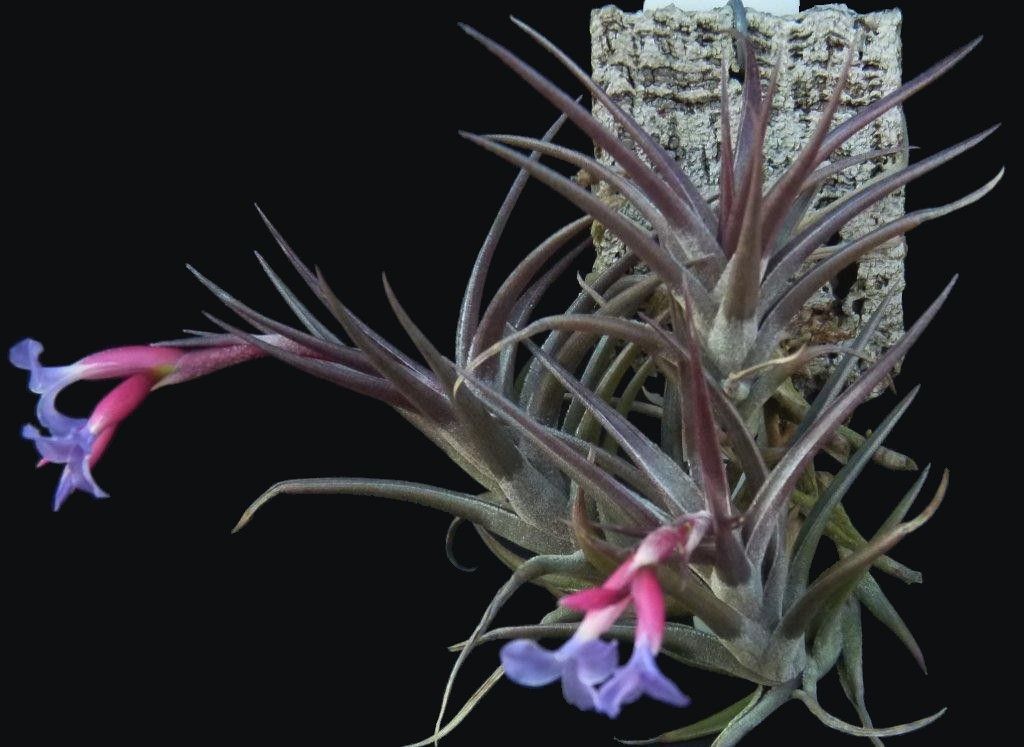
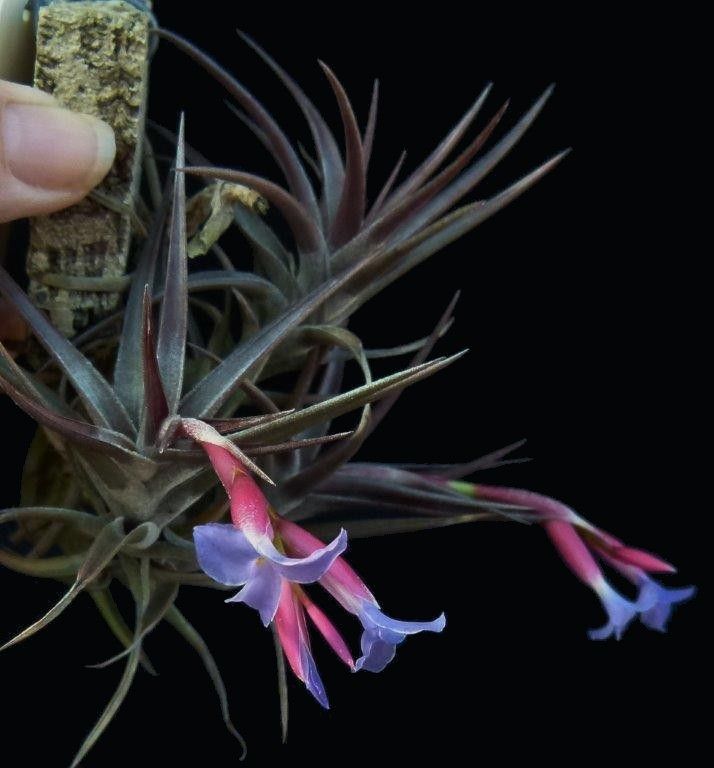
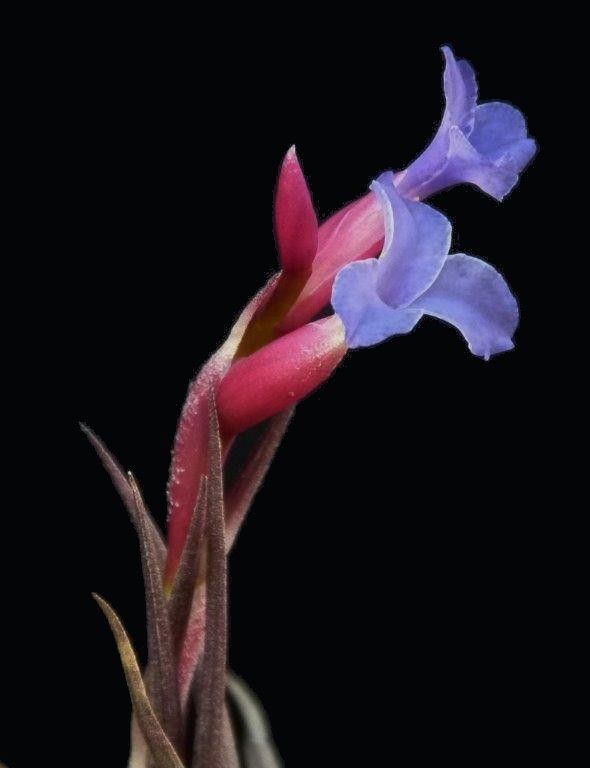
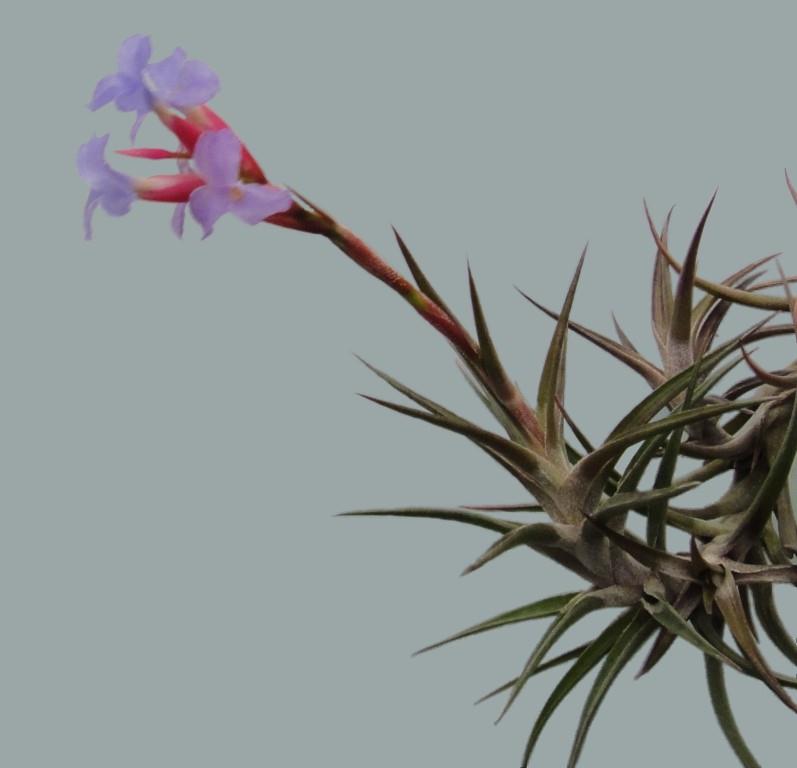
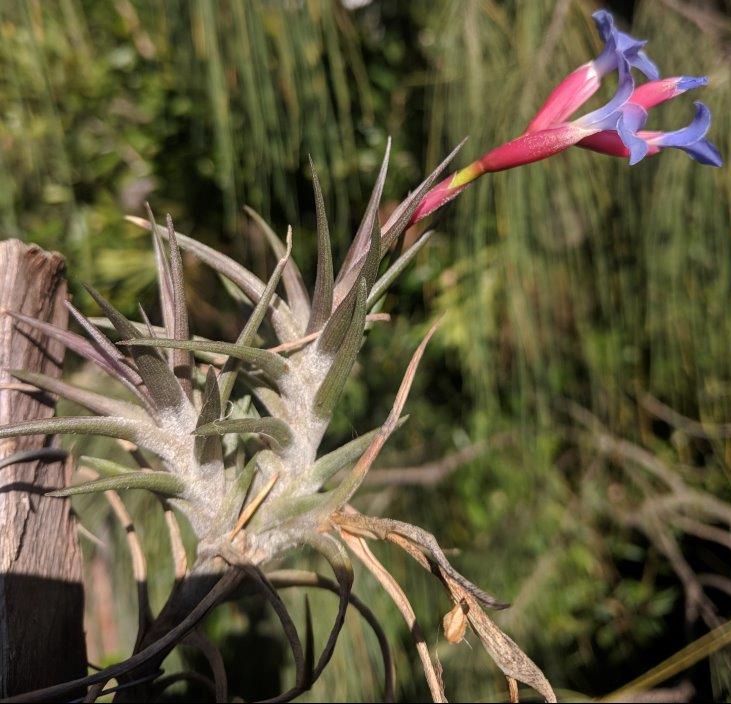
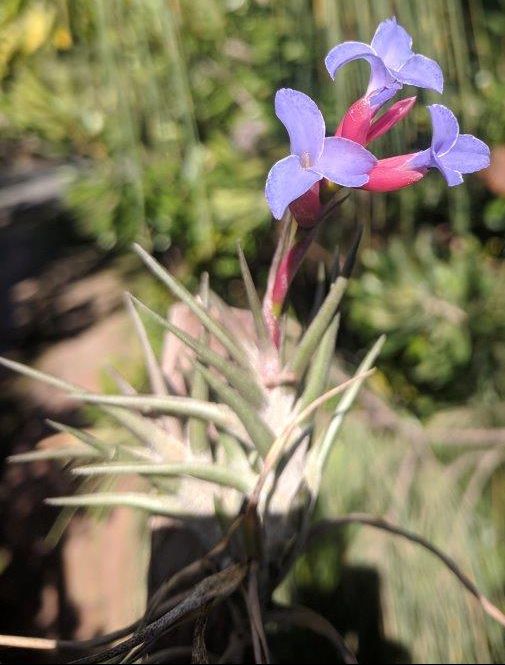
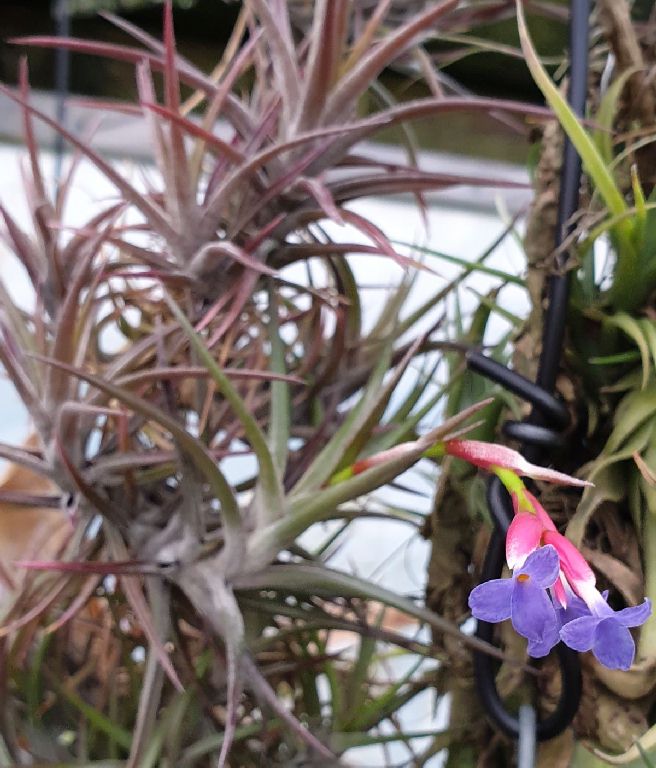
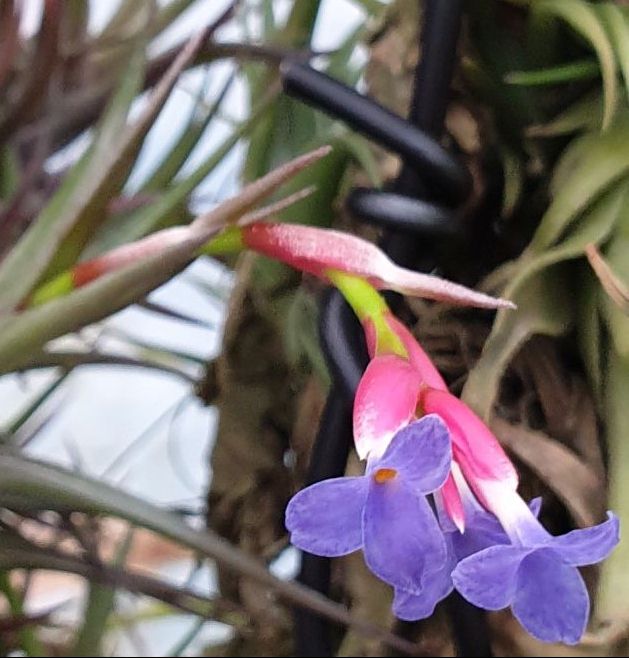
Diagnosis: Planta saxicola, caulescens, ad 15-20 cm longa; florens ad 27 cm alta. Folia cinereo-lepidota; lamina ad 5-7 cm longa, ad 0.5-0.7 cm lata. Inflorentia simplex ad 5-8 cm longa; 4-6 flora; bracteae scapi foliis similis. longiores quam internodia; bracteae florales ad 1.5 Ė 1.8 cm longae, ad 0.9-1.1 cm latae. Sepala ad 1.2-1.4 cm longa. oblonga acuta. Petala ad 2.2-2.5 cm longa. coerulea.
Holotypus: BRASILIA. Rio Grande do Sul. Riozinho .26. VIII.1994. T. Strehl 1302 (HAS 36046). Paratypus: ibidem. 20. VII.1995, J. C. da Silva s/n & T. Strehl 1368 (HAS 36070).
Plant saxicolous, caulescent, 15-20 cm long, forming groups in form of dense tufts, red.
Leaves polystichous, cinereo-silver to ruby-red, much convoluted, nerved, recurved, clearly twisted, a little keeled, triangular to narrow at apex, grooved, on both sides covered with ash-silver scales;
Sheath 2-3 cm long, 1.5-2 cm wide; at the time of flowering, the base of the sheath is a dark wine color, as well as, the apexes of the leaves and the upper leaves;
Blades are 5-7 cm long, 0.5-0.7 cm wide at the base; in the basal area and in the edges of the blades the scales are larger, denser and at times brown.
Scape and bracts of the scape red, similar to the lower leaves and the upper ones more enlarged and amplexicaul, longer than the internodes, with base glabrous and later with white scales.
Scape angular, thin, 5-10 cm long, 0.3 cm of diam.
Inflorescence simple, 4-6 flowers polystichous, 2.5 cm lomg, axis glabrous, green or red, visible at anthesis.
Floral bracts with white scales at the apex, oval, enclosing the calyx. rose to red, 1.5-1.8 cm long, 0.9-1.1 cm wide, not covering the whole white claw of the petals.
Sepals membranaceous, oblong-acuminate, rosy: free abaxially, ecarinate; the adaxials connate 2 mm to the apex, carinate, 1.2-1.4 cm long.
Petals much longer than the bracts, 2.2-2.5 cm long, the claw white, the edges of the blade bigger and recurved, of round outline and a sharp tip, clear blue to dark blue.
Stamens included in the tube formed by the corolla, filaments plicate in the middle area, being shorter than the stigma.
Capsule cylindrical.
Habitat: found in rocky face, in exposed place in the sun, forming tufts in the rocks.
Fenologia: it blooms between July and September.
Etymology: species dedicated to the eminent Medical Practioner, collector and producer of bromeliads, friend and companion in the collection and discussions of bromeliads, Dr. Jones Caldas da Silva.
Comments: the species forms compact groups, of a red color, growing on rocks.